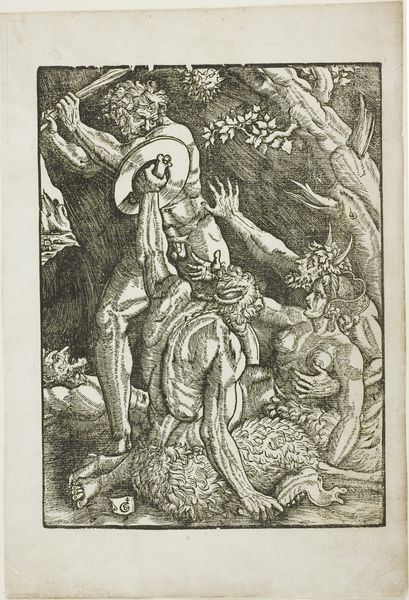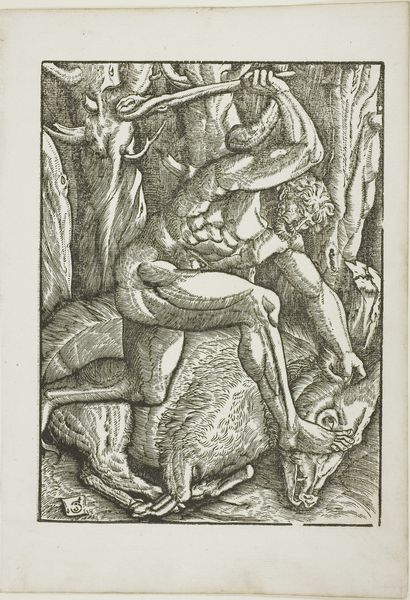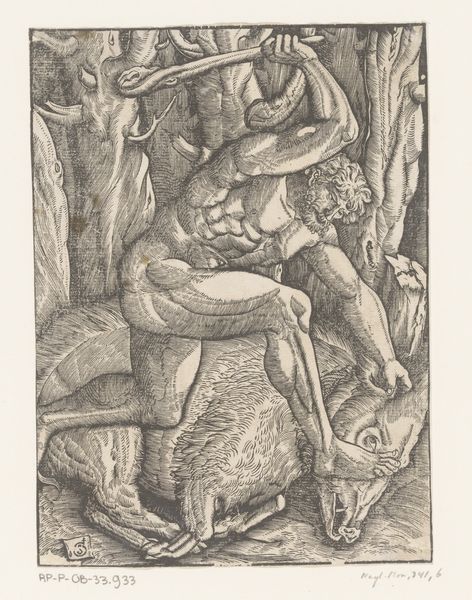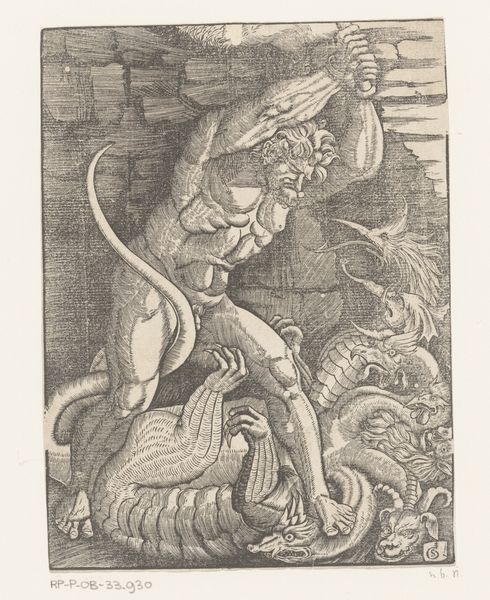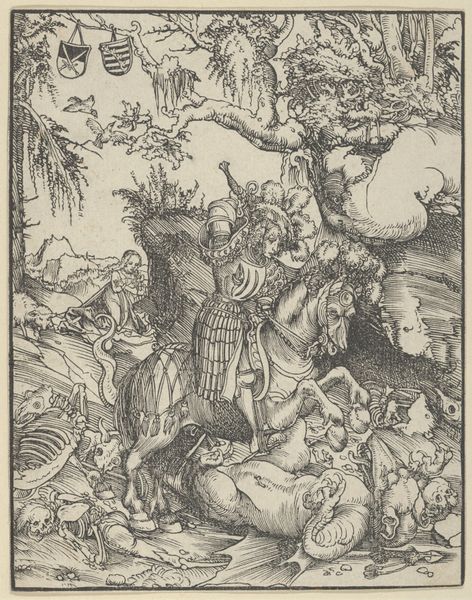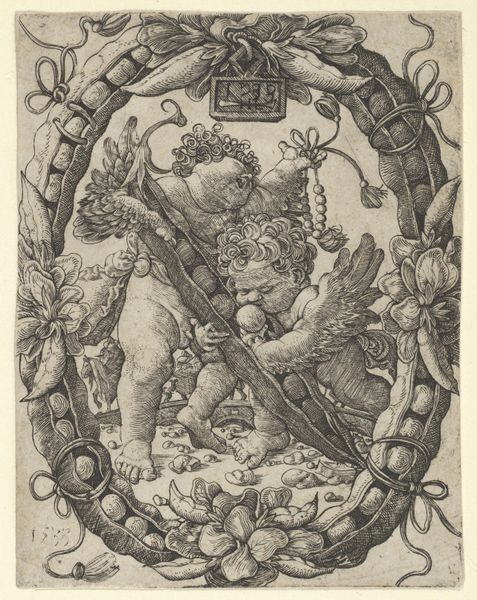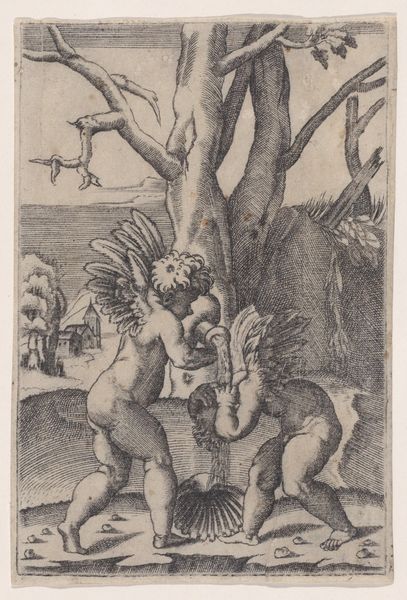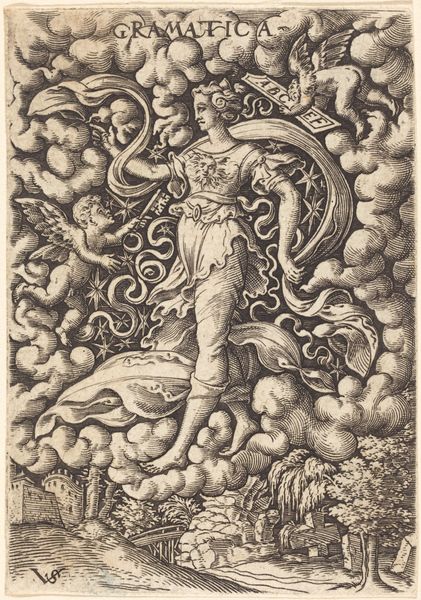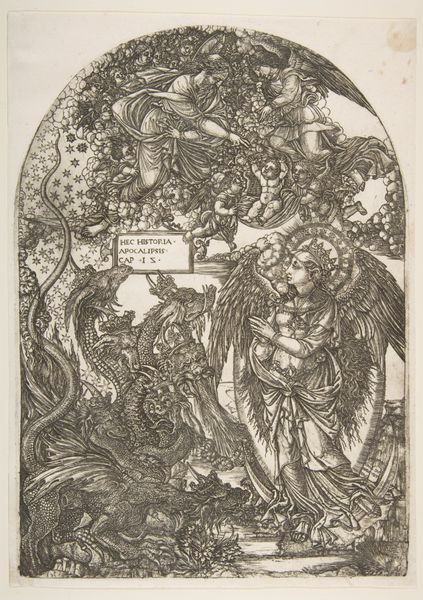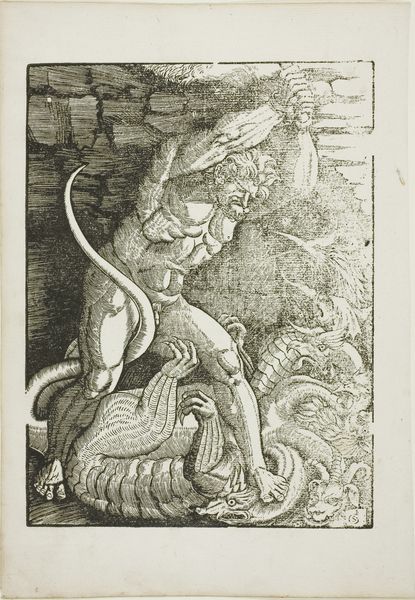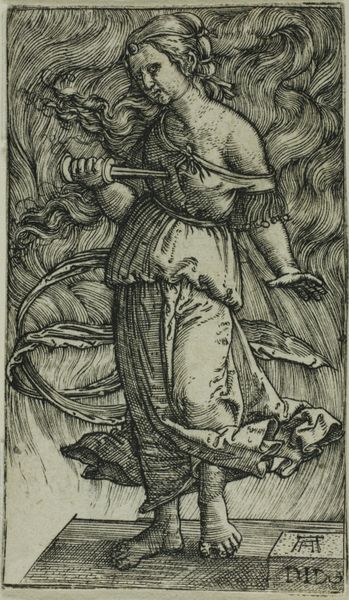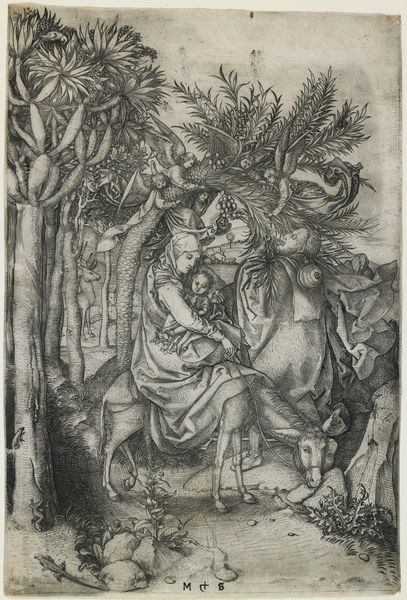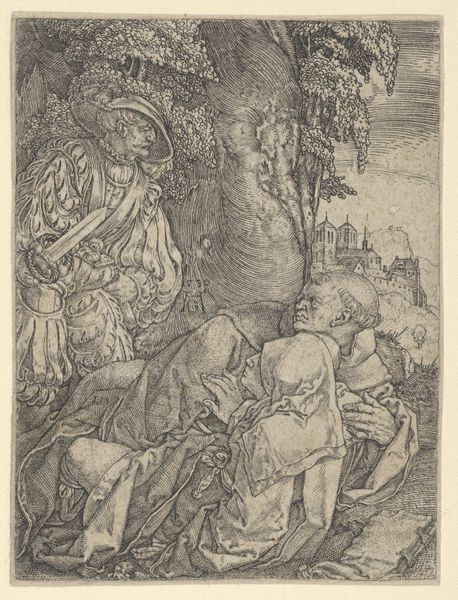
drawing, print, metal, ink, engraving
#
drawing
#
narrative-art
#
pen drawing
# print
#
metal
#
figuration
#
ink line art
#
11_renaissance
#
ink
#
history-painting
#
engraving
Dimensions: height 198 mm, width 145 mm
Copyright: Rijks Museum: Open Domain
Curator: What a fascinating print! This is "Hercules and the Centaurs," dating to around 1528. It is an engraving rendered in ink on metal, and scholars attribute it to Gabriel Salmon. Editor: My first impression is one of chaos! It's a whirlwind of limbs and tormented faces. There is an undeniable sense of violence radiating from this little tableau. Curator: Violence is certainly a prominent theme within Hercules' stories, isn't it? Remember, Salmon worked during a period where prints served as accessible tools to distribute classical narratives. This one highlights Hercules, battling centaurs, creatures often interpreted to embody unchecked desire. I am drawn to how these images of masculinity serve cultural norms. Editor: Exactly! There’s that tension isn’t it? A hyper-masculine, hero idealised, shown to battle figures considered 'monstrous' because of their lust! Considering societal anxieties, are those depictions really monstrous, or just a way to frame othering of men, where those differences pose as a risk? The cultural and societal implications… Curator: The dynamic composition reinforces the conflict. Notice how Hercules is elevated above the centaurs, both physically and symbolically, emphasizing his dominance and role as an agent of supposed order against disorder. The meticulous lines generate both volume and tension, characteristic of engravings of this time. Editor: Look closely, though. There is something profoundly empathetic about the depiction of these centaurs, even while they're positioned as antagonists. The level of detail afforded to the creatures speaks to anxieties about power. What happens when one group asserts dominance using brute strength? Doesn't it remind you about struggles that we still face now in politics, gender relations or class? Curator: That is precisely why contextualizing this piece is invaluable. Beyond the aesthetic achievements of the Renaissance, there is a narrative here—an historical representation, of that period and ours!— of a societal obsession with the ideas of the victor! And also with justice! Editor: This engraving challenges us to delve beneath its surface to investigate our collective fascination and revulsion with power. This historical reading also invites viewers to examine ongoing social power structures and power relationships that extend into our present day, too.
Comments
No comments
Be the first to comment and join the conversation on the ultimate creative platform.
